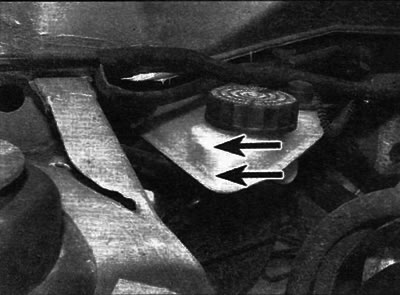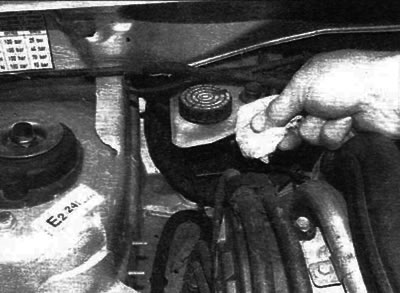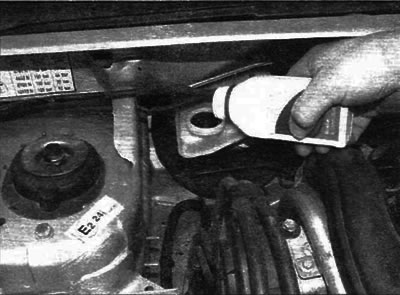Attention!
- Brake fluid is harmful to eyes and paintwork. Handle her with care.
- Do not use liquid that has been stored in an open container for a long time, as it absorbs moisture from the air. The use of such fluid can lead to a dangerous reduction in brake performance.

1. The brake reservoir is located in the engine compartment on the front of the brake booster. Level marks on the side of the tank «MAX» And «MIN». The brake fluid level should be maintained between these two marks
Advice.
- Place the car on a flat horizontal platform.
- The brake fluid level may drop slightly as the brake pads wear, but should not be allowed to fall below the mark «MIN».

2. If topping up is required, wipe the area around the reservoir neck with a clean rag before removing the cap to prevent dirt from entering the system. When adding liquid, it is recommended to inspect the tank. If the brake fluid is contaminated, it should be drained and filled with fresh fluid (see chapter 9)
Safety first!
- If the brake fluid reservoir requires frequent topping up, this means that there are leaks in the systems that must be immediately identified and repaired.
- If a brake fluid leak is suspected, do not drive the vehicle until you have thoroughly checked the brake system. Never risk driving a car if there is even the slightest doubt about the serviceability of its brakes.

3. Add fluid carefully, being careful not to spill it on the surrounding painted surfaces. Use only fluid recommended by the manufacturer. Mixing fluids of different brands can damage the brake system or cause loss of brake performance. After filling the fluid to the correct level, screw on the cap, tighten it tightly and wipe off any fluid spills
